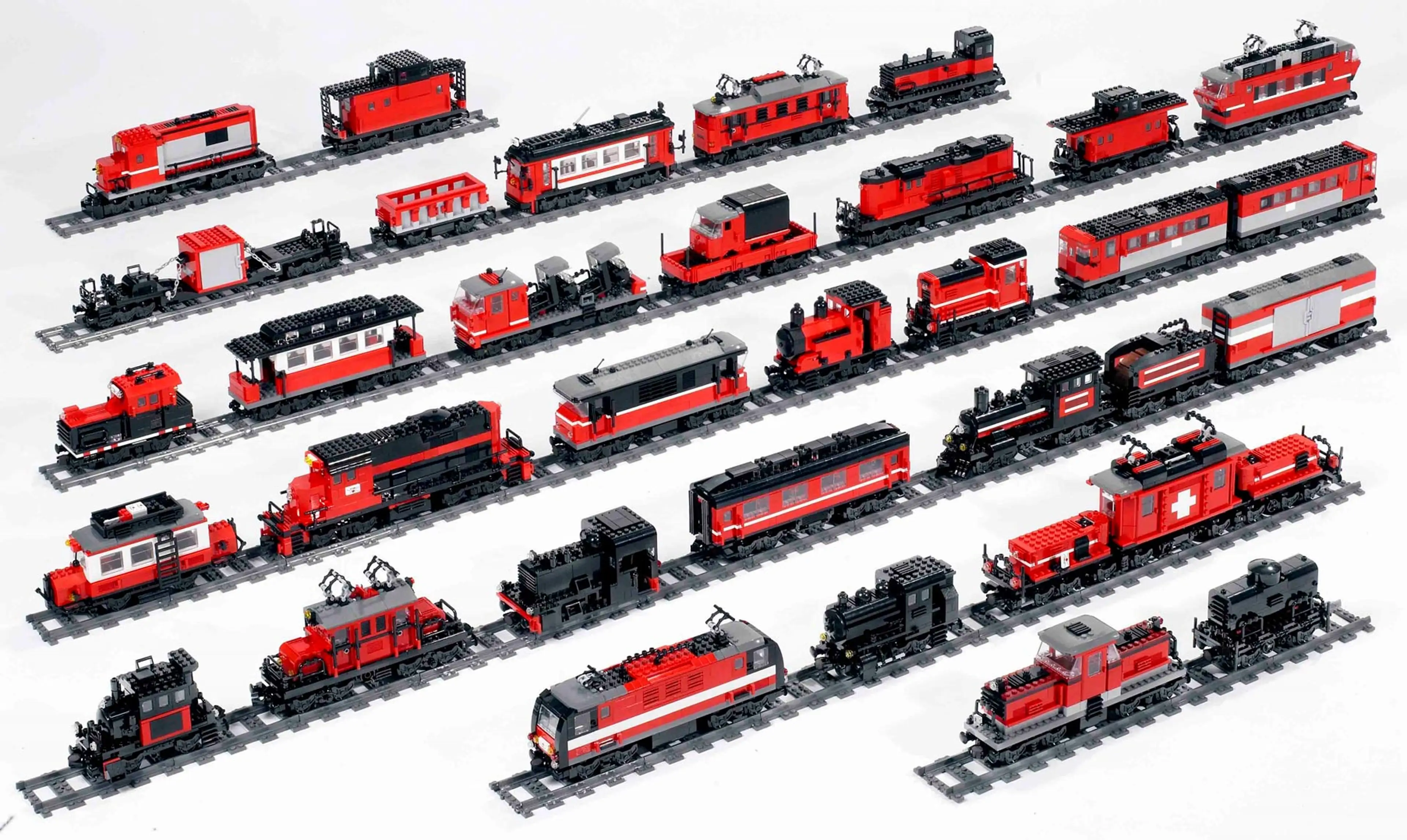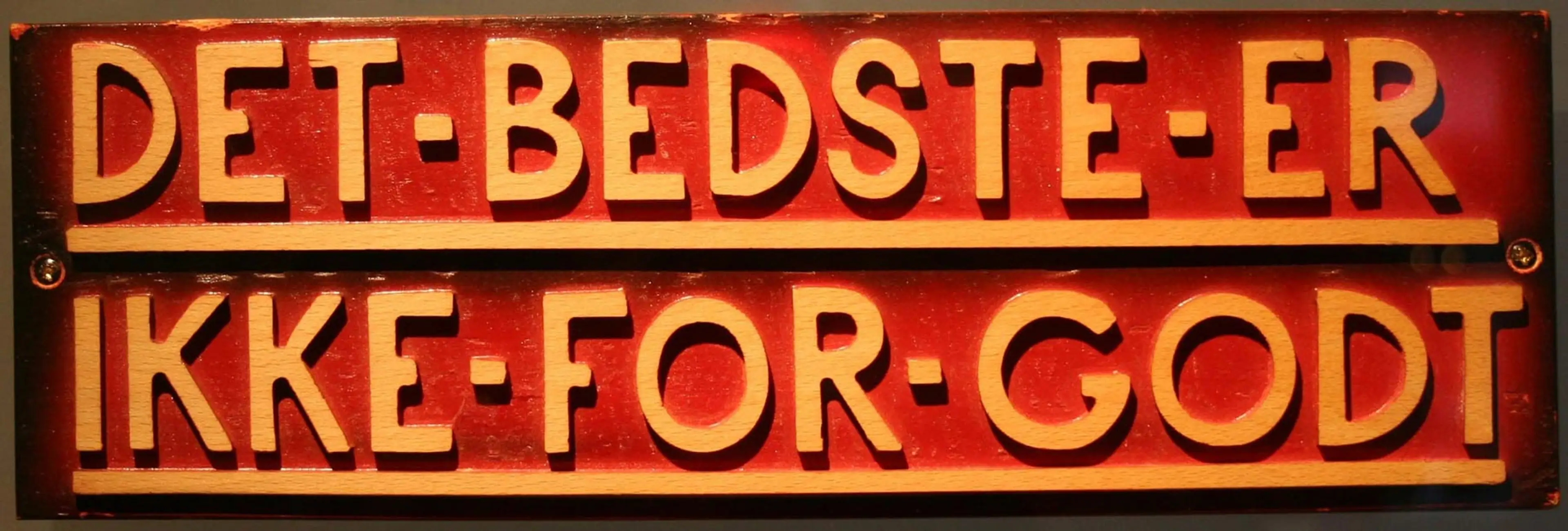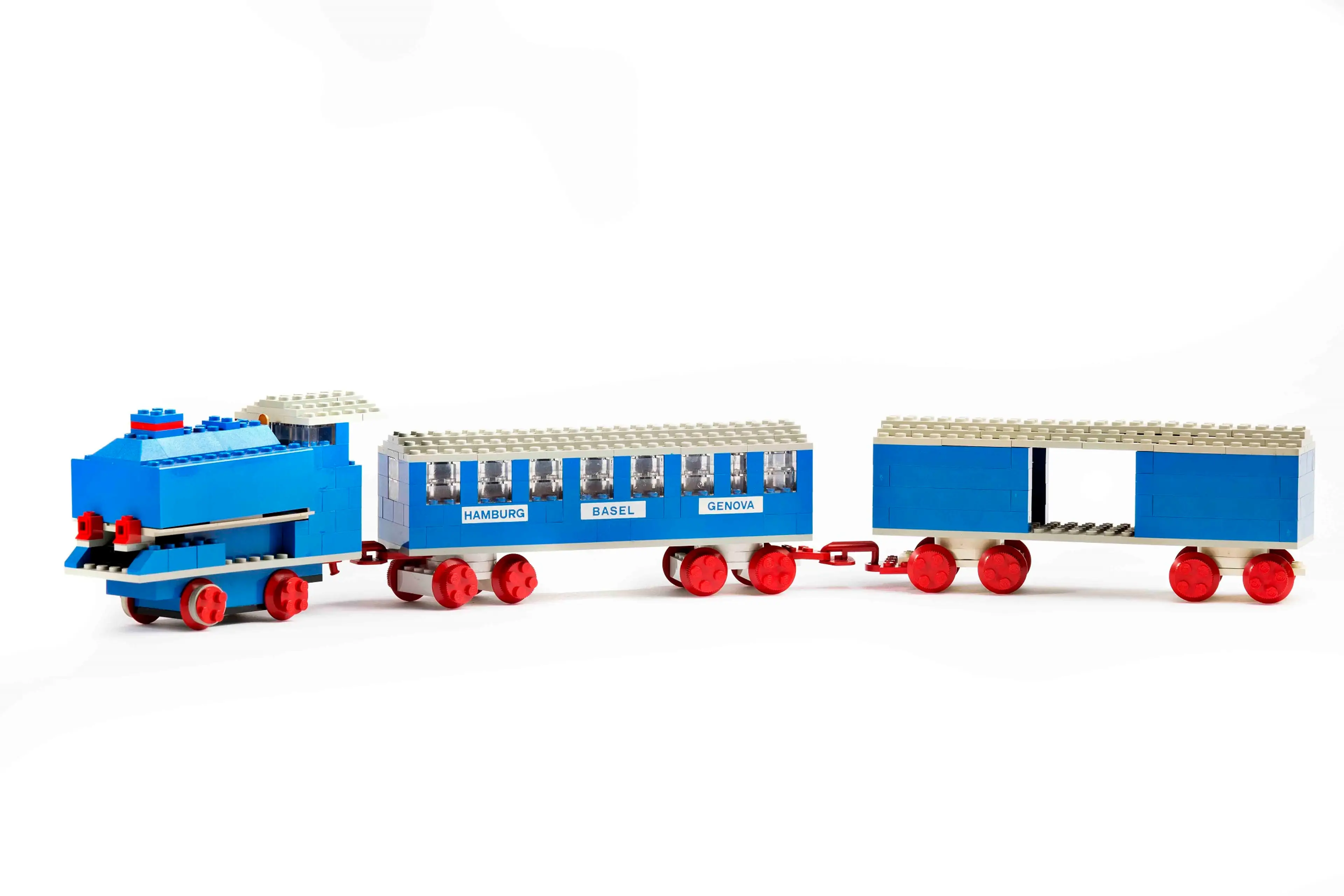Since the 1930s, LEGO trains have brought fun and enjoyment to train enthusiasts of all ages. The ever-topical and popular toy has appeared in a variety of shapes and sizes, always providing an engaged and active play experience.
The trains start rolling
When Ole Kirk Kristiansen starts making wooden toys in 1932, thereby laying the foundations of the LEGO Group, trains are among his first creations. In the 1930s, 40s and 50s the company produces various types of wooden trains from steam locomotives to express trains. The main aim at the time is to produce toys children can recognize from their everyday lives and trains fit perfectly into this picture. In the late 1940s, the LEGO Group begins adding plastic toys to its range of products but trains continue to be made only in wood.
Wooden LEGO train from the 1940s
In 1960, the LEGO Group closes its wooden-toy era after a fire damages the woodworking factory, bringing the production of wooden trains to a halt.
Two years later the LEGO Group introduces the LEGO wheel, which has a huge impact on the LEGO System in Play. Introduction of this new component brings motion to LEGO play plus the ability to launch a movable brick-built train. As a result, the first plastic train made of LEGO bricks is introduced in 1964. Prior to the introduction of the wheel, brick-built trains, with wheels of bricks, appear only on boxes as an inspiration for what can be built with LEGO bricks, not as specific building sets.
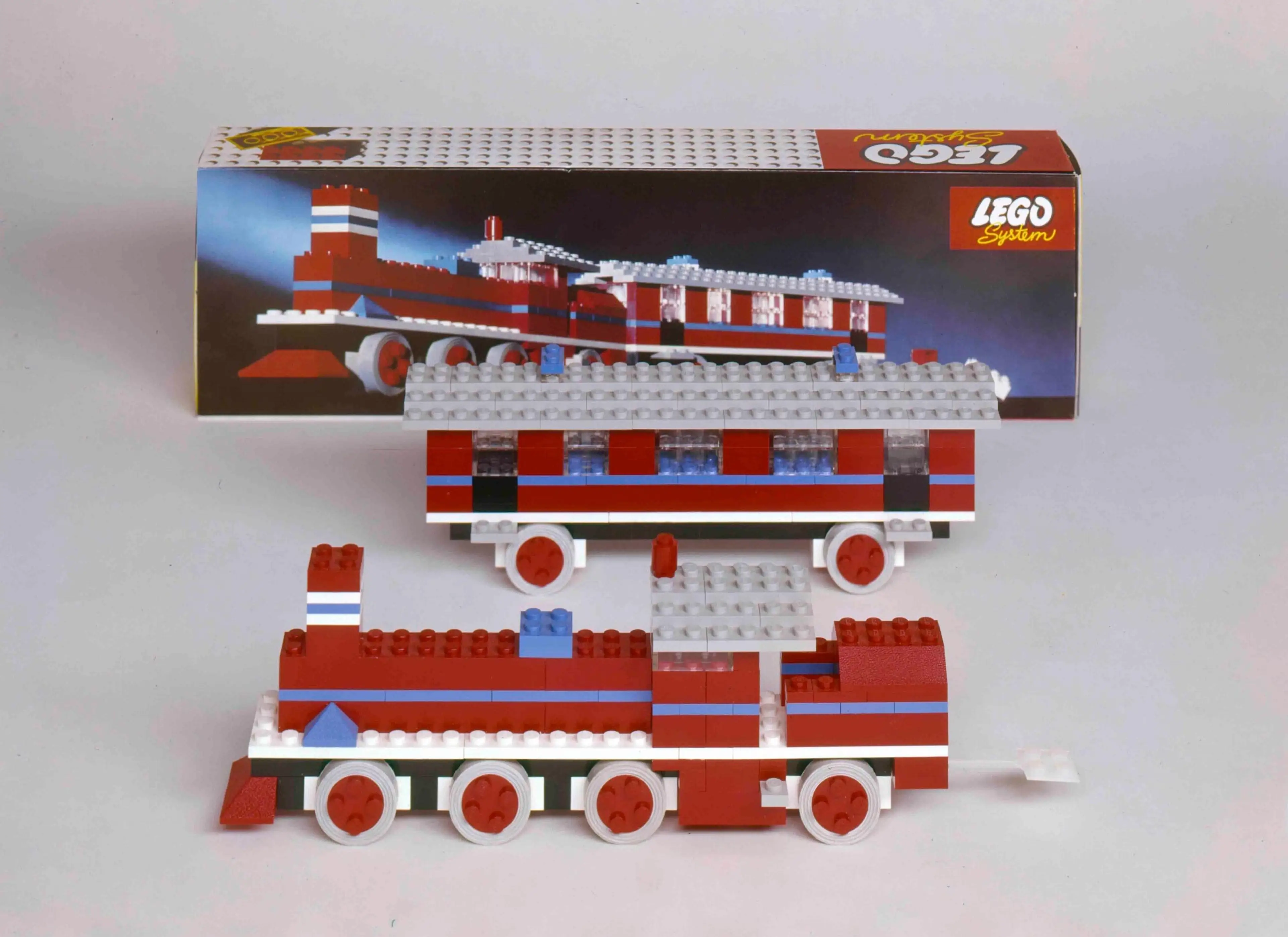
The first fully moveable brick built train launched in 1964
Power up!
A major LEGO train landmark is reached in 1966 when the first battery powered train land on the shelves. A 4.5-volt battery powers the train, which now also runs on rails. The early rails are blue, resulting in the trains from this period often being referred to as the blue trains.
In 1968, the LEGO Group introduces new technology with the Electronic train, a groundbreaking development. The train is controlled acoustically. In the marketing material the product is introduced as: “The train that drives when the whistle goes – LEGO battery train with integral electronic unit, drives when you blow a special whistle. Stops when you blow again, reverses when you blow a third time.”
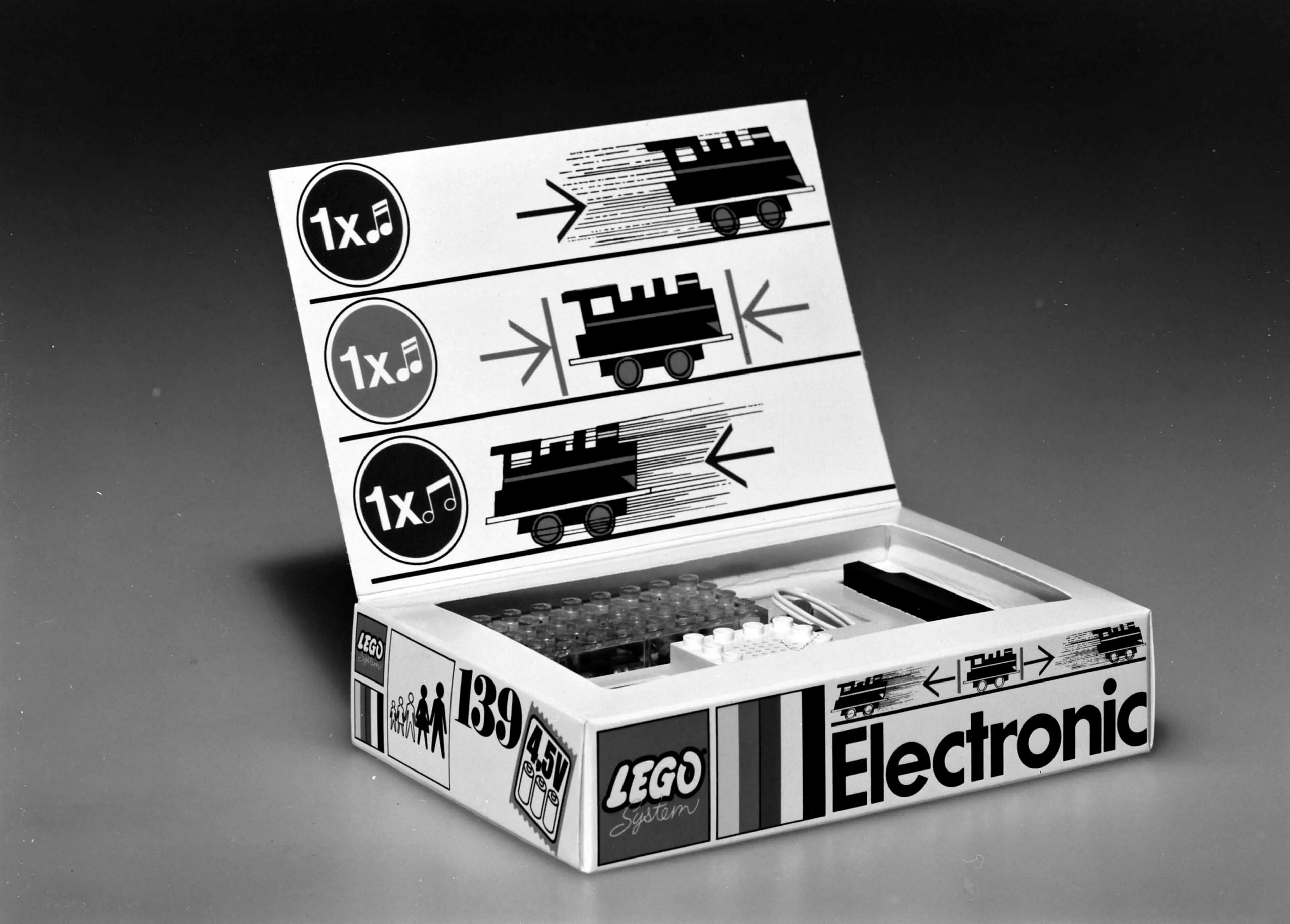
The Electronic train, launched 1968
A 12-volt electric system supplements the 4.5-volt battery in 1969. Electric rails placed between the train rails supply the power. The electric rails connect to a transformer. The product portfolio now boasts of everything from an old-fashioned push-along train to a fully electric 12-volt motorized locomotive. In a leaflet from 1969 the LEGO Group explains the idea behind the various models:
“A train for every age group – Children love to play with a LEGO train because they build it themselves. It begins with a push-along train. As the child grows, the battery motor can power the train – making it a wonderful toy for the older child. The battery motor can be changed to a 12-volt motor – and a transformer added. The same train follows the child up through the years, expanding its functions to suit the child’s age and wishes – and nothing is thrown away.”
These lines illustrate the power of the LEGO System in Play.
Train product line
After present LEGO owner Kjeld Kirk Kristiansen differentiates the LEGO product range by introducing product lines like Castle and Space for the first time in 1978, a specialized product line for trains is introduced in 1980. With the introduction of the new product line the color of the rails changes from blue to grey. In the first year, 28 new sets are introduced including a freight train and passenger trains in modern as well as more classic designs. Separate locomotives and wagons are also introduced to encourage children to put together their own unique trainsets. The train product line remains in existence from 1980 to 2003 when these trains first become part of the LEGO World City product line and then, from 2005, the LEGO City product line.
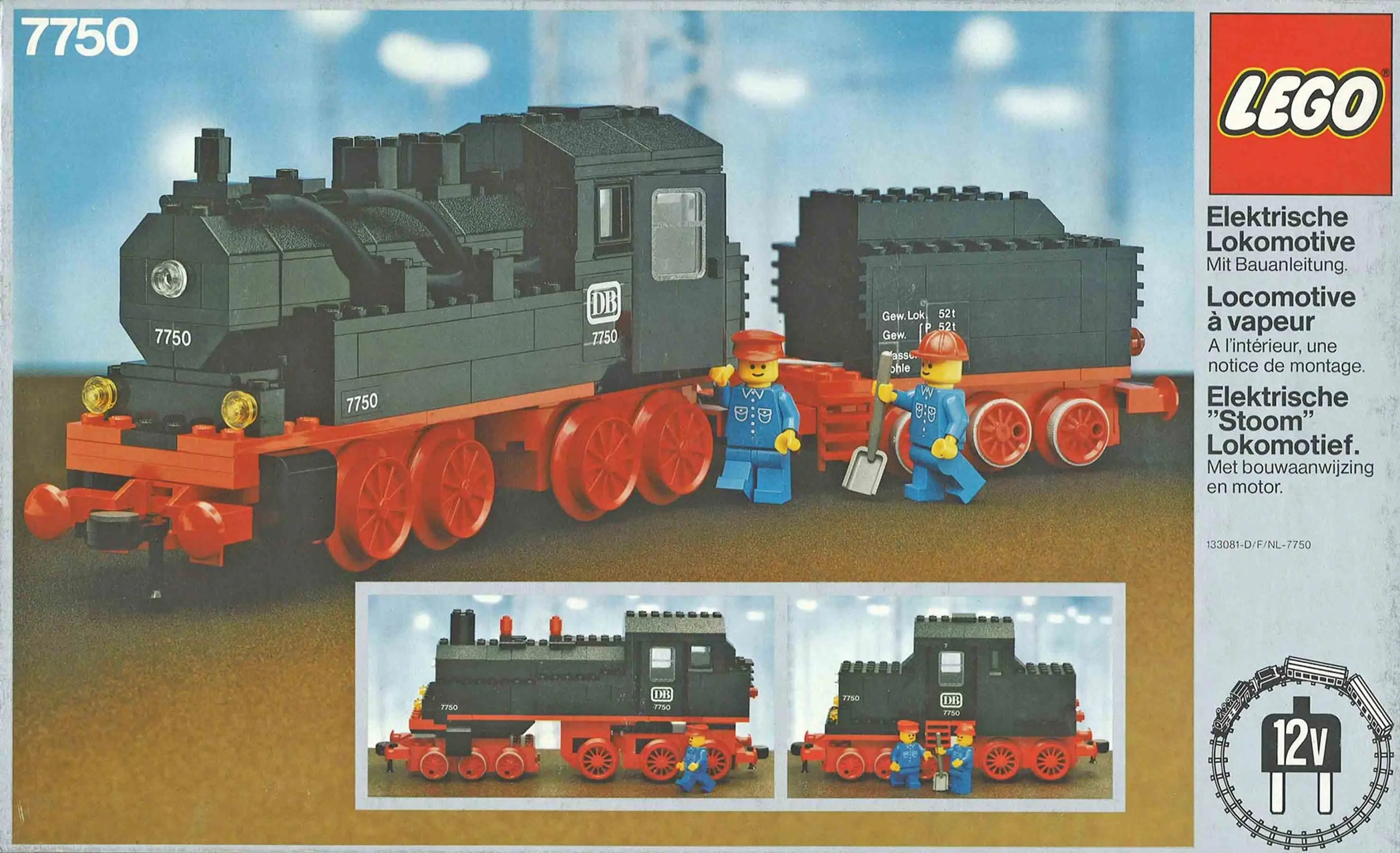
Set no. 7750. One of 28 train sets launched in 1980
In 1991, the LEGO Group introduces a new 9-volt electric system for the LEGO Trains theme. This new system supplies power through the rails, replacing the 12-volt and 4.5-volt systems. The rails now come in sections that are molded in one piece.
Trains outside the train product line
Over the years the LEGO Group has produced many trains which are not part of the original LEGO Trains product line, including but not limited to the following.
Pre-schoolers have been able to play with trains starting with the first LEGO DUPLO push-along train in 1977. In 1983, the first DUPLO rail-mounted train follows, and by 1993, the DUPLO train could chug along under battery power.
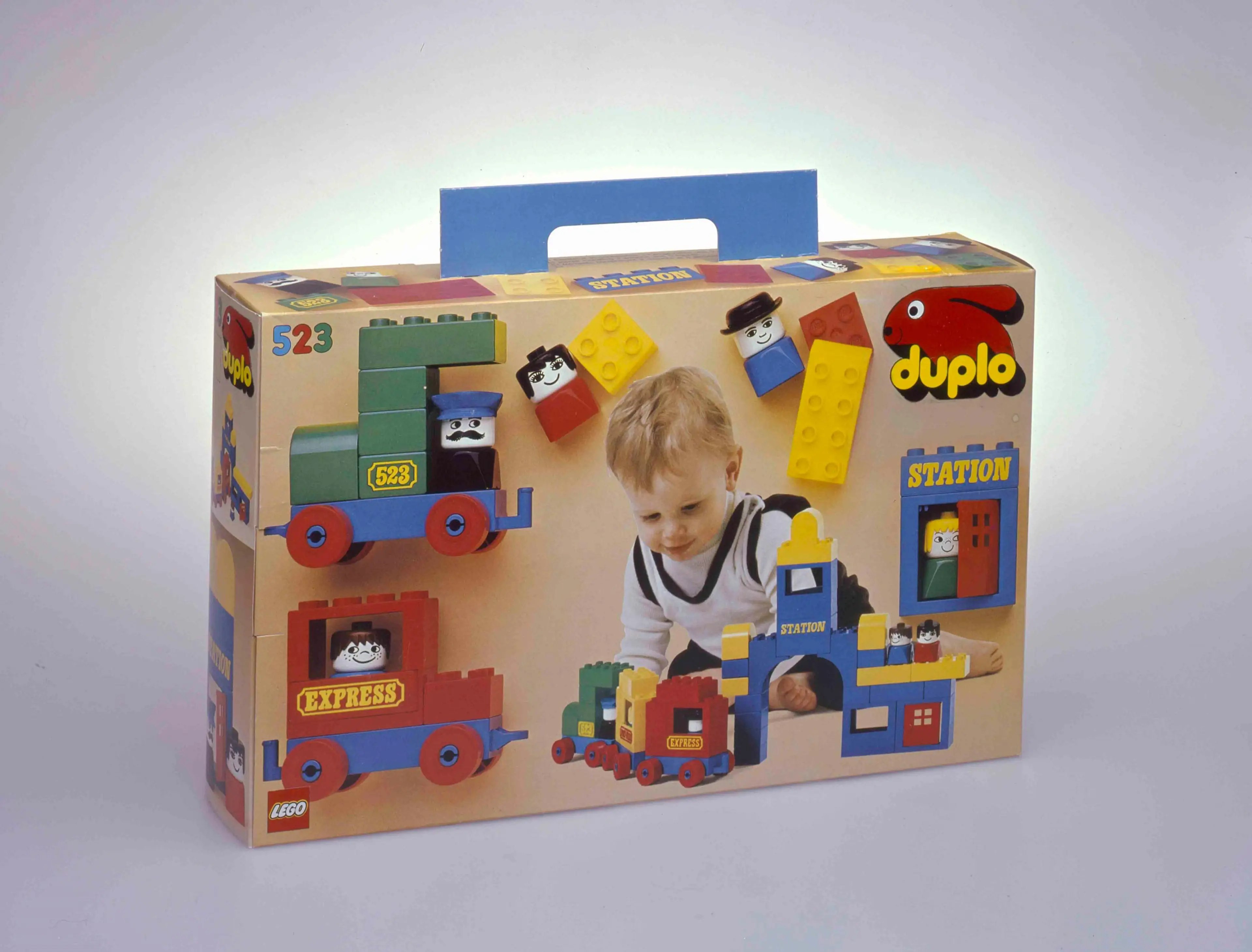
One of the first LEGO DUPLO trains launched in 1977
The LEGO Creator line brings in small trains such as set no. 4837 launched in 2008, and in 2013, with the birth of the LEGO Creator Expert line, the train with the highest number of elements to date is introduced: set no. 10233, Horizon Express with its 1,352 parts.
The Horizon Express is not the first train for skilled builders. In 1976, set no. 396 is launched as part of the Expert model range (also known as Hobby sets in some countries). It enables builders to create a realistic model of the Thatcher Perkins locomotive from 1863.
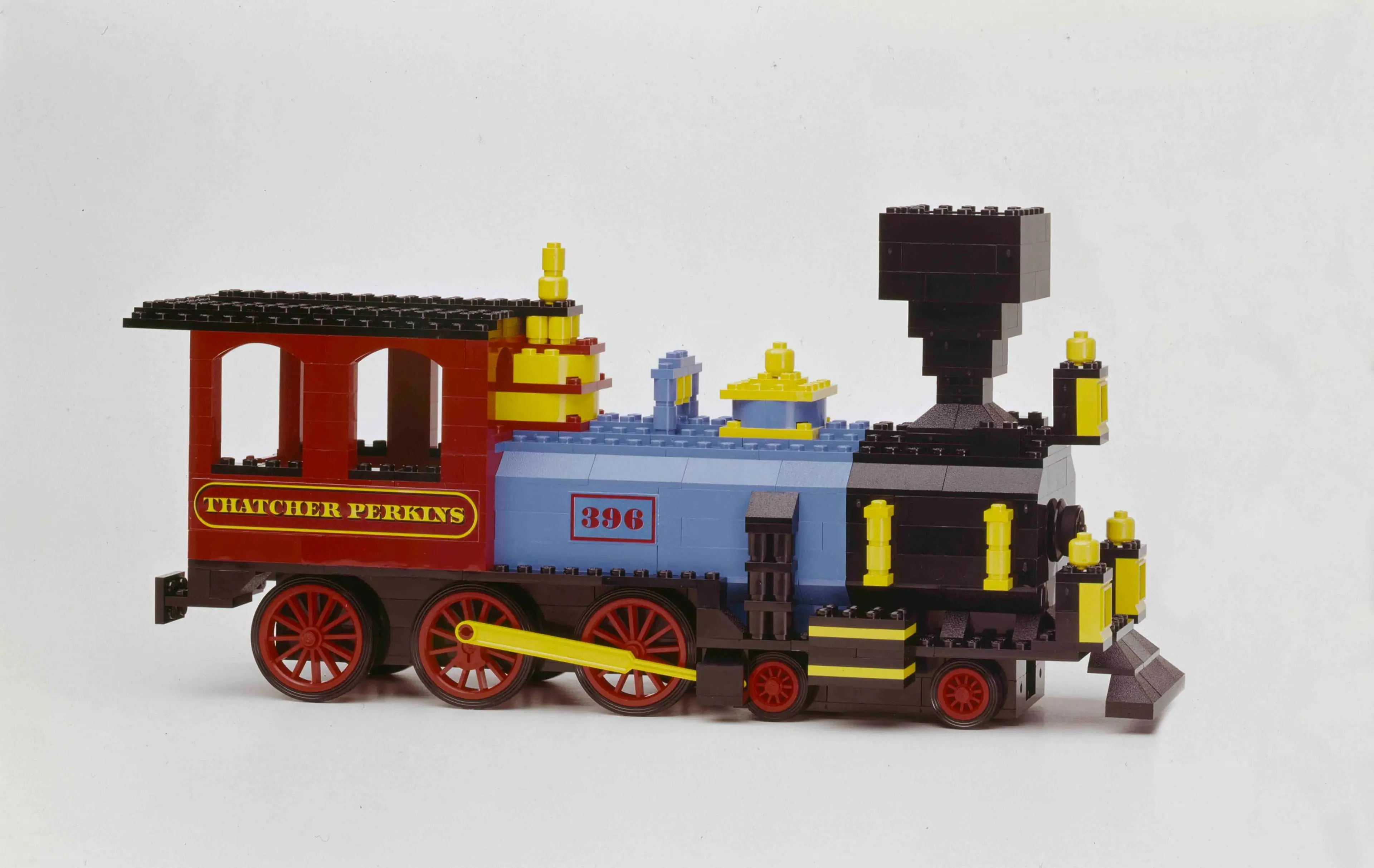
Set no. 396, Thatcher Perkins
In 2009, the LEGO Group invites a group of AFOLs (Adult Fans of LEGO) to Billund, Denmark, to discuss the design of a new train model with LEGO designers. The result is another classic locomotive: set no. 10194, Emerald Night.
A product named Hobby Trains is released in 2007 as a LEGO Factory set. The LEGO Factory website gives fans a chance to make their own creations using 3D software. Some of the sets are chosen to become official LEGO sets – for example, the Hobby Trains set. The set features a Swiss Crocodile locomotive as its main model, but it is possible to get instructions for a whopping 29 additional models that could be created with the elements that came with the box.
